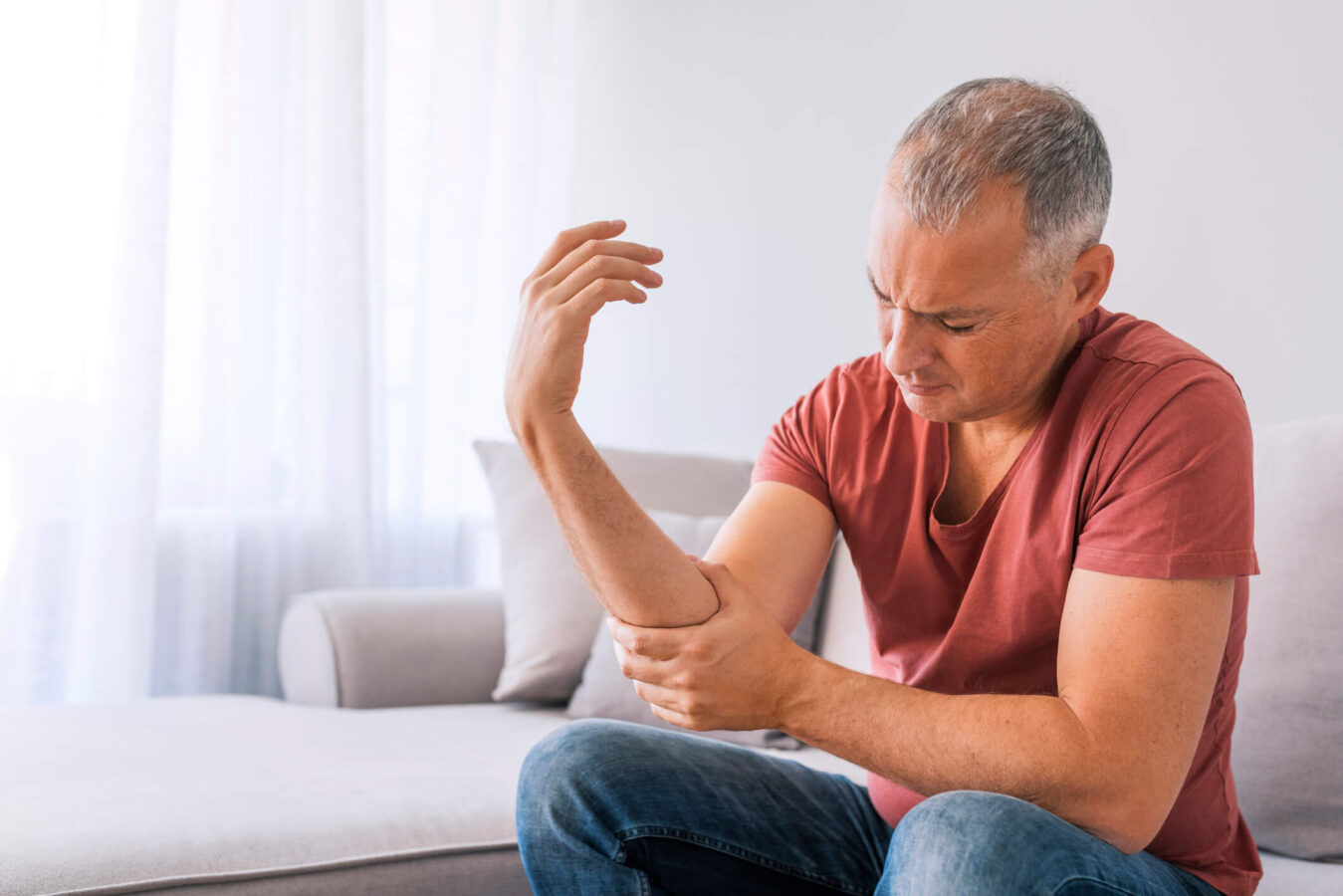
Elbow pain has a wide range of potential causes. Some are serious—and others may just be minor aches and pains. But persistent elbow pain should never be overlooked because some conditions can lead to chronic pain and disability if left untreated. In this article, we will explore common sources of elbow pain and possible signs that your injury warrants seeking further medical treatment.
The elbow joint is the spot where the long bone at the top of the arm (humerus) meets the two bones of the forearm (radius and ulna.) It is a hinge joint that allows the arm to bend, and the forearm to twist.
The muscles attached to inside of the humerus allow the wrist and fingers to bend and grasp objects. Those along the outside of the humerus help to straighten the wrist and fingers. Tendons and ligaments support the joint and hold it in place. The ulnar nerve slides through a groove on the inside of the elbow and helps with gripping and pinching activities.
Overuse, trauma, and disease can affect any of the structures that form the elbow. Some of these conditions are serious.
The cold winter months are a time to enjoy all of the recreational activities that happen in the snow: skiing, ice-skating, sledding, and snowboarding. And then there’s that winter task that is not quite as much fun but equally as taxing on the arms: shoveling snow.
All of these activities are associated with winter injuries. In fact, according to the U.S. Product Safety Commission nearly 200,000 people went to the emergency room for winter sports-related injuries in a single year. Elbow injuries, specifically, are associated with frequent bending and twisting of the hands and arms, as with shoveling and skiing.
Falls are also common in the winter as walking surfaces become icy, wet, and slippery. If you use your arm to break your fall, you may be looking at severe and painful elbow joint damage.
As the temps start to climb and those of us who prefer warmer-weather activities venture back outdoors, the risk of elbow injuries remains. Golfer’s elbow and tennis elbow are two common sports injuries that happen due to overuse and excess stress on the wrist and forearm.
And while the motions of swinging a tennis racket and a golf club do tax the elbow, you don’t have to play these sports to develop these conditions. Any task, motion, or movement that repetitively stresses elbow tissues beyond your capacity can cause pain, stiffness, and functional problems. Falls and other trauma to the arm are also possible with spring sports and activities.
Most most common causes of elbow pain fall into three general categories: overuse injuries, traumatic injuries, and disease. These include:
As an inevitable part of the human condition, pain provides important clues about our health. And not all pain is alike. The location, severity, and type of pain is indicative of different injuries and ailments.
The sensation of elbow pain can be described as burning, throbbing, aching, sharp, or stinging. Some patients find elbow pain is worse after certain movements or at certain times of the day—like first thing in the morning. Pain may be localized near the elbow joint or radiate away in either direction through the arm.
Pain does not always mean that damage has occurred to the elbow and arm. Pain can be a normal part of the inflammatory response that happens following an injury. When pain persists more than a few days to weeks after an injury, something is probably not healing properly and warrants additional care to ensure things are healing as they should.
But that is not to suggest that you should wait that long to see a healthcare provider. If you have been treating your elbow pain with rest, heat, ice, and over-the-counter medication and it does not seem to be improving in a reasonable amount of time, make an appointment to get checked out.
Elbow pain may warrant a visit to a healthcare provider and/or physical therapist if it:
Physical therapy and occupational therapy are beneficial for many conditions that cause elbow pain, including before and after elbow surgery. Both are forms of rehabilitative therapy. A physical therapist focuses on restoring strength, movement, and range of motion. An occupational therapist focuses on improving the motor skills used to perform everyday tasks.
Your rehabilitative therapy journey begins with a comprehensive evaluation to determine the underlying cause of your pain and create a personalized treatment plan to address your needs. If you are referred by a healthcare provider for a recent elbow injury, your therapist works in conjunction with your physician to support your overall treatment goals.
In physical therapy, flexibility and strengthening exercises help improve mobility and function. Manual therapy, and ice and/or heat therapy also help reduce pain, stiffness, and inflammation. They monitor your progress and adjust your physical therapy treatment plan as needed to feel relief and help you become pain free.
Occupational therapy may be useful as well as it teaches you how to use your muscles properly when you do everyday tasks, so you don’t reinjure your elbow. Are you ready to be free of that nagging elbow pain? Find a physical therapy clinic near you.